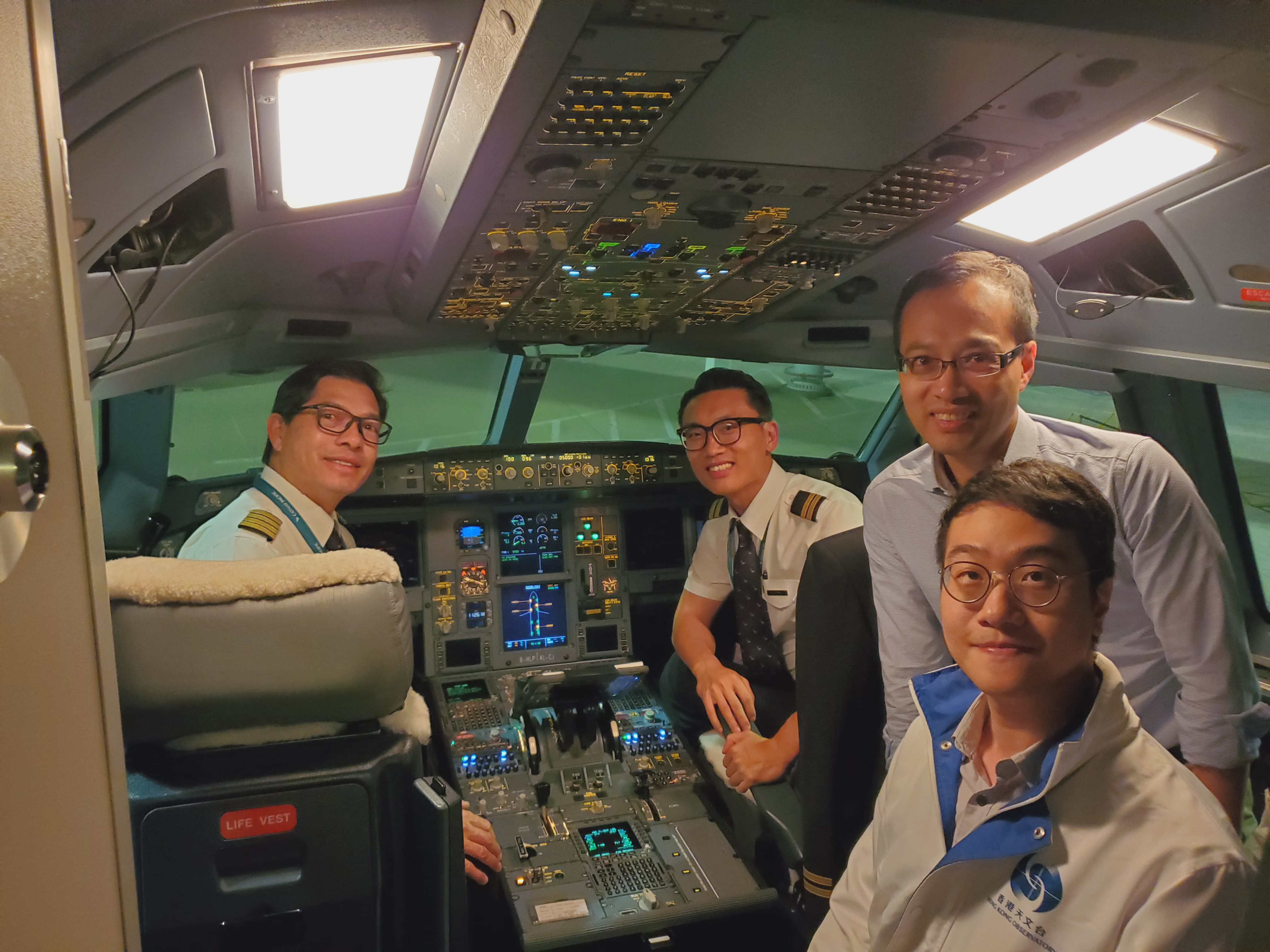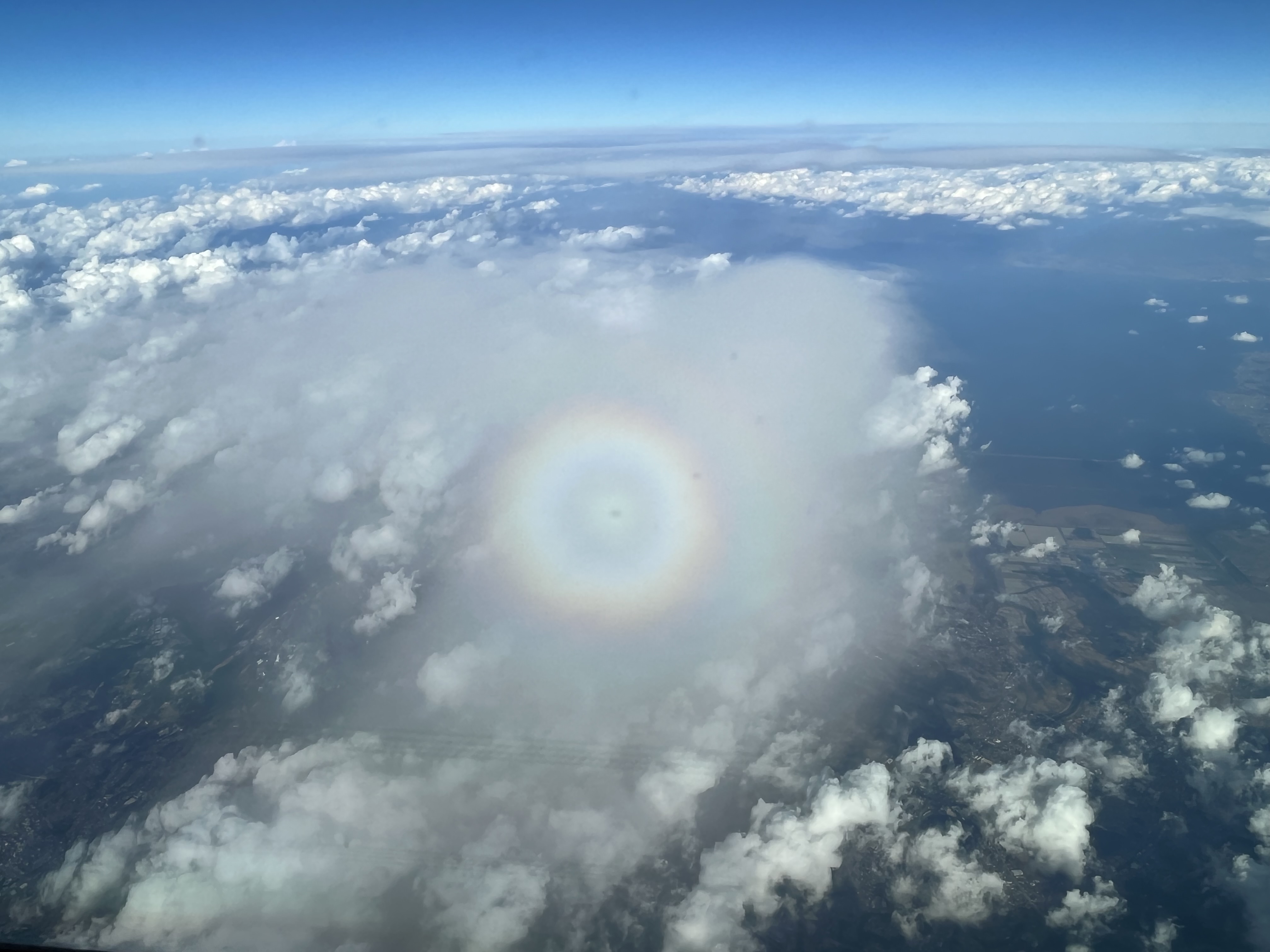Enhancing Aviation Weather Services Through Familiarization Flights
Enhancing Aviation Weather Services Through Familiarization Flights
CHAN Yan-chun, WONG Tak-kan
March 2024
Since 2005, the Hong Kong Observatory has been sending staff members to participate in actual flying in the cockpit as arranged by airlines, which allows colleagues involved in aviation weather services to interact and exchange ideas with pilots and crew members. Due to the pandemic, these familiarization flight arrangements were suspended for several years. With the support of the Hong Kong Cathay Pacific Airways Limited, a new round of familiarization flights resumed in October 2023, and lasted till January 2024.
Through interviews with pilots, colleagues from the Observatory gained insights into how they utilize weather information during flights, including the practical operation of the "MyFlightWx" electronic flight bag application developed by the Observatory for flights using the Hong Kong International Airport. Colleagues can collected feedback on the Observatory's existing aviation weather services and products, and engage in discussions regarding future services and product developments (Figure 1).

Figure 1 Photo of Aeronautical Meteorological Adviser, Mr. Chan Yan Chun, and Aviation Weather Forecaster, Mr. Wong Tak Kan, of the Observatory with Captain, Stephen Ahmoye (left pilot seat), and First Officer, Jeff Yu (right pilot seat), of Cathay Pacific Airways in the cockpit after the familiarization flight.
During the familiarization flights, colleagues from the Observatory have the opportunity to witness firsthand how pilots acquire the latest weather information and respond to different weather conditions in the cockpit. This leaves a profound impression on the participating colleagues, and highlighted the importance of aviation weather services to the aviation industry. High-quality aviation weather information allows pilots and crew members to be well-prepared when dealing with adverse weather situations, thereby enhancing flight safety and ensuring the regularity and efficiency of air traffic operations. The first-hand experience of encountering significant weather in flight as well as direct exchanges with pilots are useful for enhancement of the Observatory's aviation weather services.
Apart from adverse weather, various atmospheric conditions are encountered along flight routes. Different kinds of atmospheric phenomena may therefore be observed en-route. For example, when an aircraft flies over the clouds made up of liquid water droplets, with the right alignment of sunlight, one may observe the aircraft’s shadow surrounded by alternating reddish and bluish rings. This phenomenon, known as a “glory”, is one of the atmospheric optical phenomena often be observed during flight (Figure 2). If encountered at high altitudes below the freezing point, it may even serve as a sign of potential icing conditions that needs attention. These various observations during flight help deepen the participating colleagues’ understanding of aviation meteorology.

Figure 2 A photo of glory taken on 23 November 2023 during the familiarization flight from Hong Kong to Fukuoka of Japan.